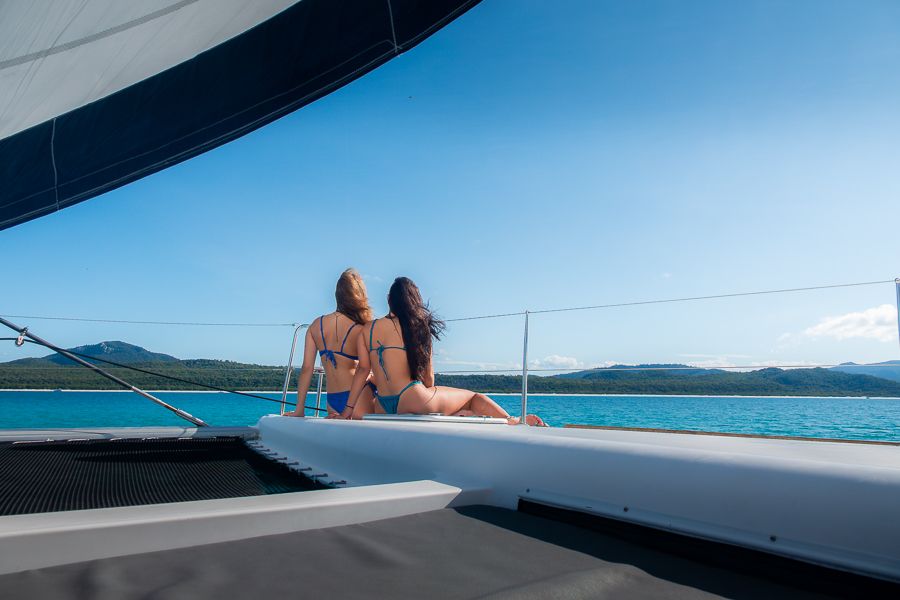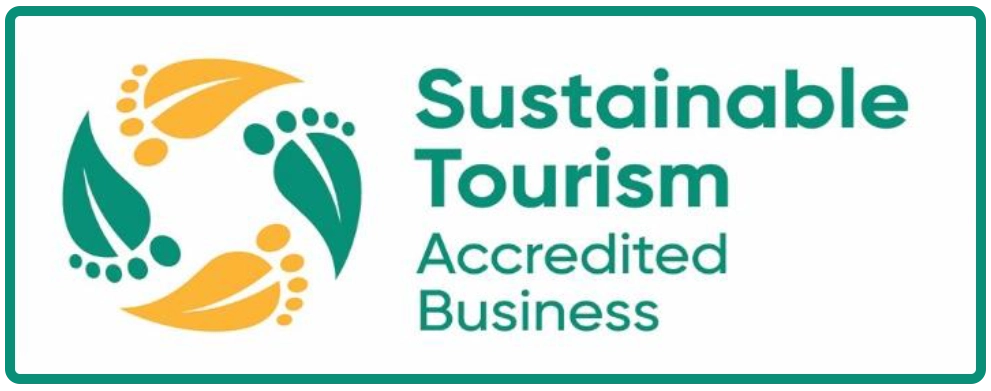Cyclones In The Whitsundays

The Whitsundays is a popular holiday destination in North Queensland and is home to both the Great Barrier Reef and the Whitsunday Islands. People from across Australia and the world visit the region to tick off bucket-list items. The Whitsundays is not only famous for the Great Barrier Reef, but also for the pure silica sand beach, Whitehaven. The hub of the region is Airlie Beach, a lively town with a summery feel and holiday buzz.
While the region is picture-perfect with blue skies, incredible beaches, sunshine and warm weather for the majority of the year, there is also a wet season that runs through January to March. Wet season doesn't guarantee rain every day during this period, it simply means there is a higher chance that it might rain in comparison to the rest of the year. Not only does wet season come with a higher chance of rain, it also comes with a higher risk of tropical cyclones. But what is a tropical cyclone and how often are they likely to hit the Whitsundays and Airlie Beach?
What is a tropical cyclone?

Tropical cyclones are revolving low pressure systems that are formed over the ocean when the sea surface temperatures are typically above 26 degrees Celsius. Cyclones develop over warm waters where areas of low pressure are formed from air that has been heated by the sun. This then causes the hot and moist air to rise and condense into thunderclouds. Cyclones typically move towards land where they can bring heavy rain, destructive winds, widespread flooding, large swells and sometimes storm surges. The storms can last days, and even weeks.
There are five Australian cyclone categories used to identify the severity of wind during a cyclone. A category 1 cyclone would see gusts of winds less than 125 kilometres per hour, whereas a category 5 cyclone has gusts of winds more than 280 kilometres per hour. Once a cyclone makes landfall, it typically loses energy, slows down and weakens.
Depending where you are in the world, cyclones have different names in different places. Here in Australia and over the South Pacific and Indian Ocean, we call the storms cyclones. In the North Atlantic, central North Pacific and Northeast Pacific, cyclones are known as hurricanes. And in the Northwest Pacific they are called typhoons. The only difference is that cyclones rotate in a clockwise direction, whereas hurricanes and typhoons rotate anti-clockwise.
When is cyclone season in the Whitsundays?

Cyclone season in the Whitsundays occurs during wet season, between January and March when temperatures are at their hottest. In the Whitsundays, the daily average temperature sits around 28 degrees Celsius during these warm months, which can be alluring to tropical cyclones. However, the majority of cyclones in the Whitsundays have occurred throughout February and March.
Cyclone season not only occurs in the Whitsundays, but also in other parts of Australia. Most of Northern Queensland, the Northern Territory, and northern Western Australia can experience cyclones from November to April.
History of cyclones in the Whitsundays

The Whitsundays has a long history of cyclones throughout the years. As cyclones were around long before us, we can't give an exact history of each one. However, since the 1970’s there have been several reports of cyclones that hit Airlie Beach and the Whitsundays. These include Cyclone Ada (1970), Cyclone Otto (1977), Cyclone Paul (1980), Cyclone Ivor (1990), Cyclone Ului (2010), Cyclone Ita (2014), Cyclone Debbie (2017), and most recently Cyclone Koji (2026).
The biggest cyclone in the last 10 years to hit the Whitsundays was Tropical Cyclone Debbie in March 2017. Debbie hit Airlie Beach as a Category 4 system, which brought winds of up to 175 kilometres an hour. Debbie’s winds lifted roofs from houses, uprooted trees, and caused power outages. The storm brought on torrential rain which flooded the dams, rivers and roads. The aftermath of Debbie left residents without power and water for weeks, isolated from the town, and unable to work. Debbie caused significant damage to houses and buildings, wiped out Shute Harbour Marina, and destroyed parts of the Great Barrier Reef.
Cyclone safety in the Whitsundays

If a cyclone warning has been announced during your holiday in the Whitsundays, there are things you can do to ensure your safety. Firstly, don’t panic. Stay calm and keep up to date with the current warnings. Check government websites, rather than news outlets, as the media can often exaggerate the event and create distress.
There are ways to keep yourself safe in preparation for a cyclone. Ensure your house or accommodation is secure by taping the windows and boarding up any exposed windows. Secure loose items outside your home that could cause damage if picked up by the strong winds. Work out the safest room in the house in case you need to seek shelter during the storm. Park your car somewhere safe, away from powerlines, trees or waterways. Stock up on essential items in the event that you lose power (i.e. torches, candles, gas cookers, a battery operated radio, ice, first aid kits). Stock the cupboards with enough food to last you for a few days (ensure it is food that can be prepared without power).
If you are worried about visiting the Whitsundays during cyclone season, our team are here to ease your mind. And just know, there is a very low chance of a cyclone forming during your Whitsunday holiday.
When is the best time to visit the Whitsundays?

A popular time to visit the Whitsundays is during winter! With clear skies, low humidity, average daily temperatures of 25°C, and low levels of rainfall, the months between June and September make for the ultimate time to take a trip to the Whitsundays. Whale season also occurs during winter which brings hundreds of humpback whales to the Whitsundays. The humpbacks migrate north in search of warmer waters and food, making the Whitsunday waters the perfect stop on their journey - and they love to put on a show. Not only are the temperatures perfect and the whales out during winter, it also means that stinger season is over and the risk of being stung in the Whitsunday waters is low! For more information on the best time to visit the Whitsundays, check out our article!
Winter isn't the only great time to visit the Whitsundays. There is plenty to offer year-round. With snorkelling day tours, overnight island hopping tours, adventure sailing tours, scenic flights, waterfall tours, and Great Barrier Reef tours, there's no way you'll be bored in Airlie Beach, no matter the weather!













